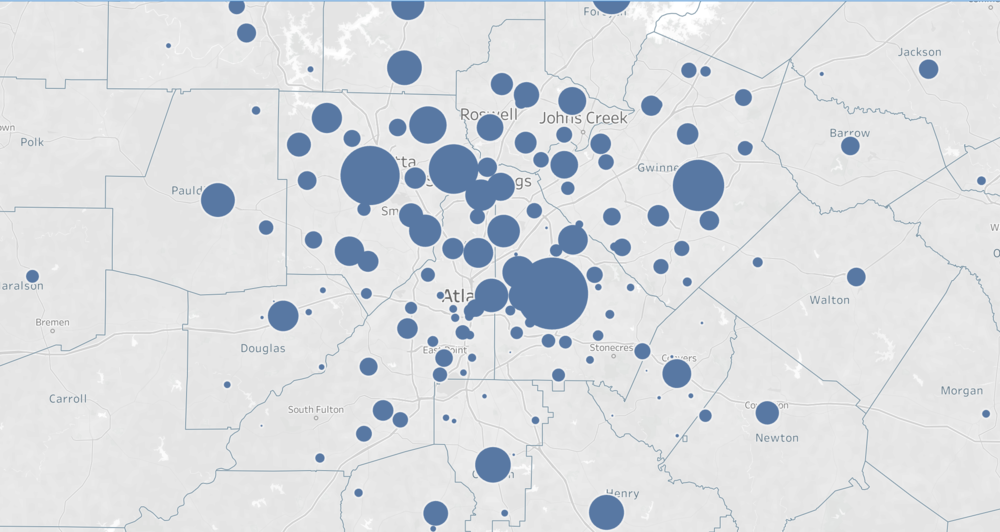
Caption
More than 550,000 ballots were returned using secure absentee drop boxes in the November 2020 presidential election.
Credit: Stephen Fowler | GPB News

More than 550,000 ballots were returned using secure absentee drop boxes in the November 2020 presidential election.
Absentee ballot drop boxes were a pandemic-era addition to voting in Georgia used primarily in the 2020 presidential race and by voters of both parties. For the first time ever, you can now see where and when more than 550,000 Georgians used nearly 300 boxes across 112 counties.
To get this story, GPB News (with the help of reporters from WABE, NPR and The Atlanta Journal-Constitution) spent hundreds of hours analyzing more than 9,200 drop box transfer forms that election workers used to track how many ballots they retrieved from each location each day and time they checked the boxes. Those entries were then cleaned up to include the drop box location, address and geocoded latitude and longitude to map their location. A small handful of dropbox entries were one-off collections from locations and not used for multiple weeks.
While more than 10% of the votes in the 2020 general election were returned using drop boxes, that percentage is likely to be much lower in the 2022 general election thanks to several changes in Georgia's election laws through the massive 98-page SB 202 signed into law in 2021.
MORE: What does Georgia's new voting law SB 202 do?
For starters, there is now a cap on how many drop boxes a county is allowed to have for voters, a limit on where those boxes can be located and restrictions on when it can be available for use. Instead of 24/7 access on government property (with surveillance recording of the boxes), the Republican-backed law now only allows drop boxes to be open during early voting hours, which can typically run from 9:00 a.m. to 5:00 a.m. during a 19-day window leading up to the election and only in early voting locations.
All 159 counties must have a drop box, but are limited in the number of boxes open to one per 100,000 voters.
An NPR/WABE/GPB investigation found the counties hardest hit by the new restrictions are where voters used drop boxes the most – with more than half of the more than 550,000 voters living in just four metro Atlanta counties, heavily Democratic and nonwhite areas.
A quarter of the state's voters will now have farther to travel to get to a drop box, and much less time to use them.
According to an analysis of drop box data, about 40% of the ballots returned via drop box in 2020 would be either too early or too late under the new rules, and the most popular day to use a drop box was Election Day, when more than 5% of the drop box ballots were returned.
RELATED: A new Georgia voting law reduced ballot drop box access in places that used them most
To be clear, the analysis does not suggest that large numbers of votes would not count in future elections because of the drop box rules, but it does highlight the change in voter behavior that the new law requires for voters to cast that same ballot. Because drop boxes are now inside early voting locations only open during in person early voting times, many voters may find it easier to just vote in person. Others may wait until election day, potentially creating longer lines for elections officials and voters – or might not vote at all.
The coronavirus pandemic and the many elections conducted during the height of concerns also changed voter behavior in ways that will probably not last. Before the pandemic, fewer than 10% of voters regularly voted absentee by mail, and state officials expect that to continue in the future.
Drop boxes have also been subject to conspiracy theories and misinformation by supporters of former President Donald Trump and other Republican leaders who insinuate without evidence that they are rife with fraud. There have been very few instances of absentee voter fraud reported in the state of Georgia, and have been minimal in scale.